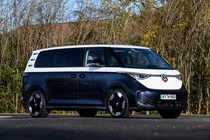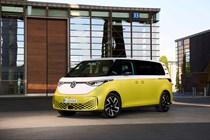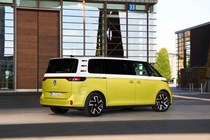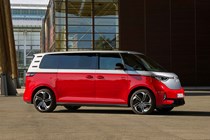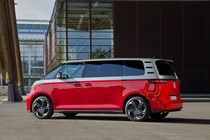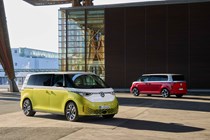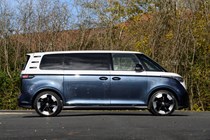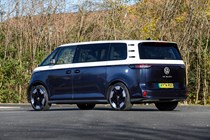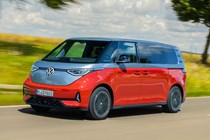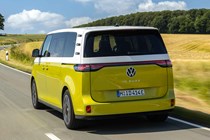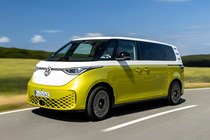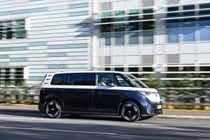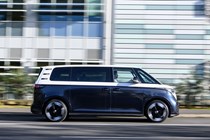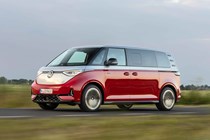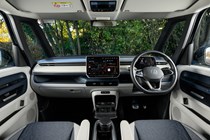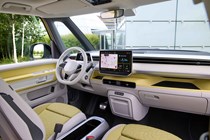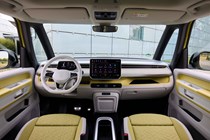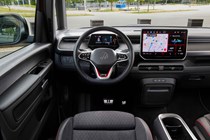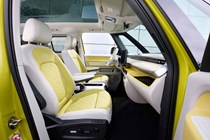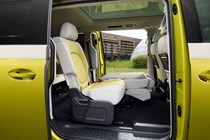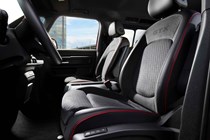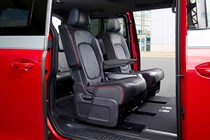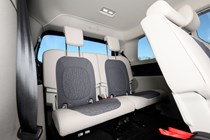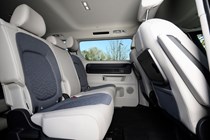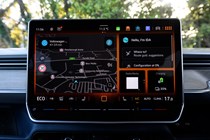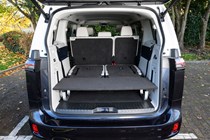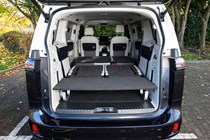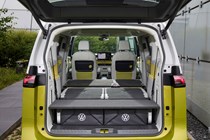
Volkswagen ID. Buzz engines, drive and performance
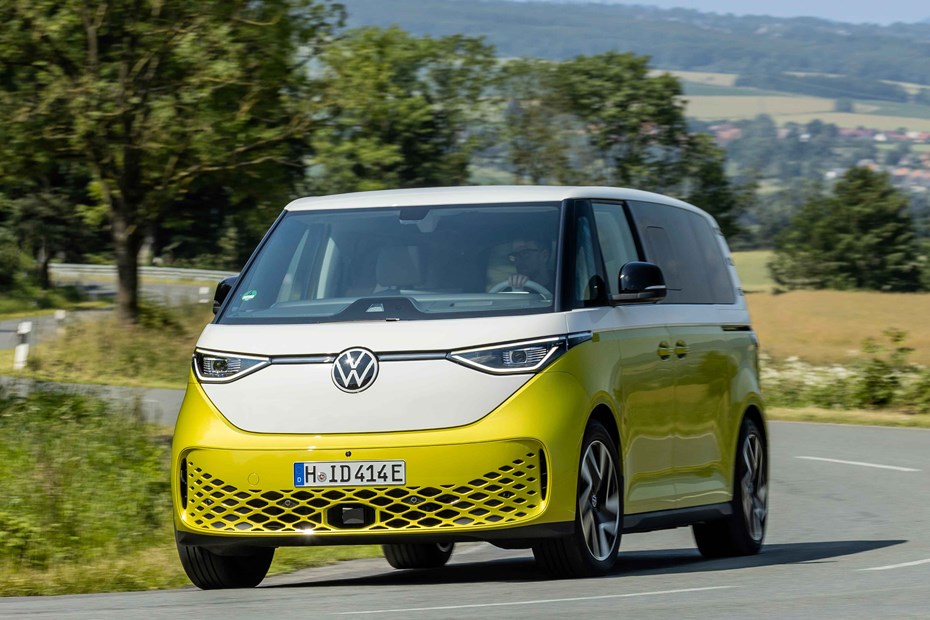
- Two powertrains (after the update)
- Standard 286hp model is more than fast enough
- Sporty GTX seems a little pointless to us
Electric motors
When the Volkswagen ID. Buzz was launched in 2022, it was only available with a 204hp electric motor (mounted on the rear axle) and a 77kWh battery pack. We thought this was plenty fast enough, but that hasn’t stopped Volkswagen from restructuring the MPV’s line-up for its 2024 update.
Now, the entry-level motor produces a healthy 286hp and 545Nm of torque (pulling power) – and it gives the Buzz a surprising turn of speed. It can sprint from 0–62mph in 7.6 seconds and hit a limited top speed of 99mph which, trust us, is startling in a vehicle that’s the same shape and weight as a bungalow. The additional weight of the LWB model slightly slows down the Buzz, though it can still reach 62mph in a brisk 7.9 seconds.
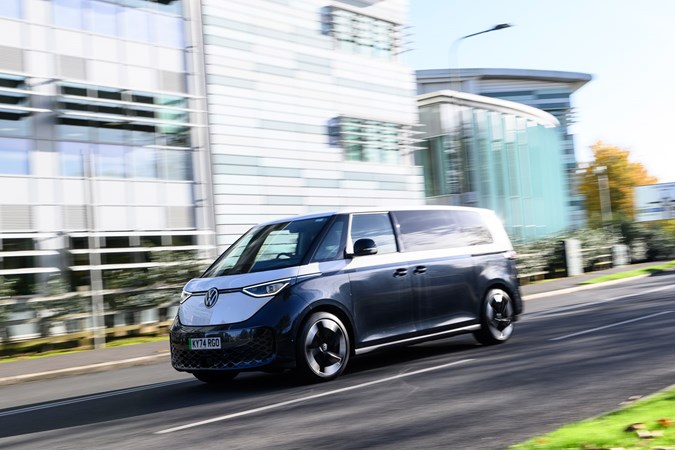
Above that, there’s the sporty GTX model. It has an extra motor on its front axle to boost power and torque to 340hp and 560Nm respectively. Not that the Buzz needed it. Top speed is still capped at 99mph, but the extra poke has hacked the van’s 0–62mph time down to just 6.1 seconds. To give that figure some context, that’s fast enough to make mincemeat of the best small hot hatches such as the Abarth 595 and MINI Cooper S.
Volkswagen also tweaked the Buzz’s batteries. Now, the entry-level model has a 79kWh unit (which, rather cleverly, fits into the same space as the old 77kWh battery thanks to its superior cell chemistry), while the long-wheelbase model has a beefy 86kWh unit. We’ll explore the range figures in the running costs section of this review.
What’s it like to drive?
- Rides well considering its huge wheels
- Handling is neat and controlled
- GTX does little to enhance the experience
The ID. Buzz isn’t an exciting car. And it was never designed to be, so expecting a sporty experience from it is wrong. However, what it does deliver is confidence, predictability and comfort.
Impressively for a vehicle of this size, it doesn’t roll around in corners – and, if you do overcook your entrance with too much speed, it’s easy to control. We found that simply lifting off the throttle and letting the brake regen wash off some speed is all that’s needed to bring the Buzz back to heel.
Even though the entry-level model now sends a rather punchy 286hp to the rear wheels, there’s very little chance of the back end stepping out. It’s very planted. And, although rather numb, the steering on the standard model is direct and quick enough for the amount of power the Buzz produces.
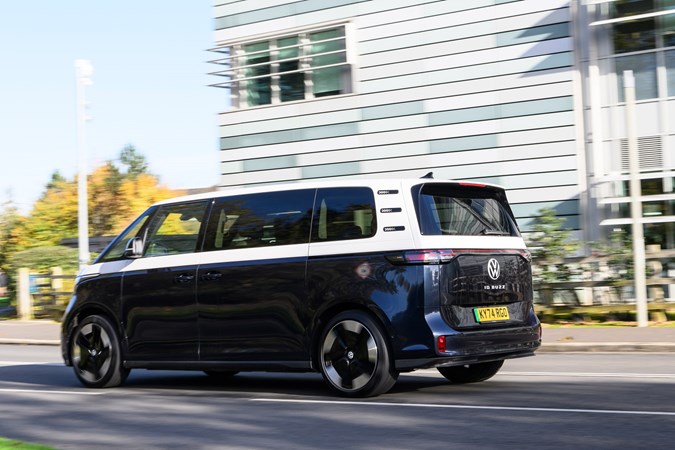
Ride quality is good for the most part, although we found some versions of the Buzz can get into a fidgety, oscillating rhythm on lightly pockmarked surfaces, rocking between the front and rear axles as the chassis tries to control the sheer heft of its battery. We also found the suspension of the long-wheelbase (LWB) model with seven seats to be quite bouncy, especially for those sitting in the rear rows.
We’re less impressed by the GTX. We really can’t figure out why Volkswagen has tried to make this 2.6-tonne van feel sporty. It’s carrying far too much weight to take advantage of the extra cornering ability its stiffer chassis is trying to provide.
Enter a corner at what would be a sensible speed in a normal car, and the weight of the Buzz’s massive body and battery will press down on the front tyres like a skip full of wrought iron and make them howl like they’re being tortured by a young hooligan in a fast-food car park.
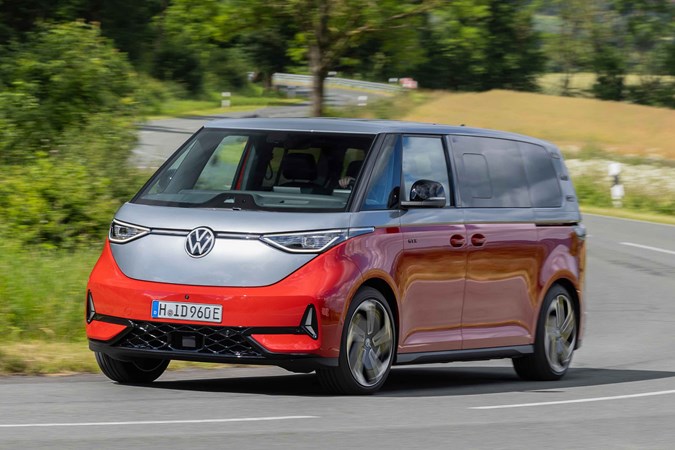
Volkswagen hasn’t done a great job with the GTX’s steering, either. It’s not quick enough for a car with 340hp. We tried the GTX on some challenging switchback roads during its European launch event, and we found we always needed more lock than anticipated. The counterargument is that this system makes the GTX relaxing on the motorway.
Guess what? We didn’t like the GTX’s brakes, either. There’s very little feel to them. In fact, they like they’ve been robbed from a sim racing rig, which means we were constantly second-guessing how much pressure we needed to bring the MPV to a sensible halt at traffic lights. It’s a trait with the standard Buzz model, too, but amplified with the GTX because of its additional performance.
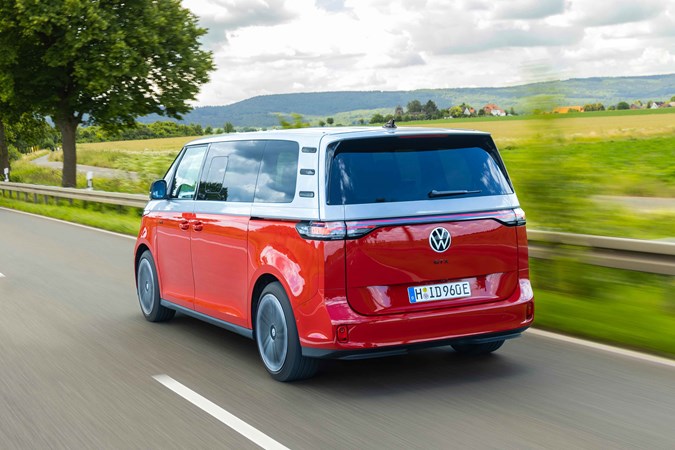
Thankfully, because the GTX has an extra electric motor on its front axle, Volkswagen was able to dial up its regenerative braking. So, we could drive around the poor brake pedal by sticking the Buzz in maximum regen mode and allowing the front motor to act like an anchor.
If you want a Buzz, our advice would be to swerve the GTX and stick with the standard 286hp model. It’s plenty fast enough for an MPV – and it’s £8,400 cheaper.


